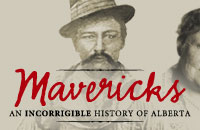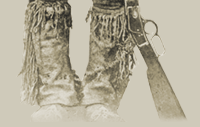

 |
|
Assessment and evaluation for the purpose of student growth is an integral component of the process of teaching and learning. Its goal should be to promote positive personal growth and awareness of metacognition, abilities, skills, knowledge, and understandings of the topic and themselves. The Assessment ProcessAssessment should be a collaborative process between teachers and students, allowing input from students and their teacher as to the goals, objectives, and intended outcomes for the students' work. The class should develop their own rubric by identifying evaluation criteria that will match their own goals and expected learner outcomes, as well as assist the students to gain a better understanding of the expectations for the process and the final product. Therefore, as they begin work on their performance or project, the students will be able to map out their ideas for the end product and maintain a clear understanding of what is needed for success. Assessment should also be returned to frequently throughout the project, allowing students to revisit the expectations, reflect on their progress, and make revisions to their work accordingly. Rather than merely being used as a summative evaluation tool, the criteria or rubric ought to be used as a guide for students throughout the learning process. Using assessment as a continuous process will motivate students to perform their best and act as a learning instrument in itself by helping students to understand more about how they learn and work best. Below are some useful links for more information on assessing learning and employing the use of rubrics, as well as tools for creating and guiding student assessment. To find many other examples of rubrics, simply search the Internet using the search term "rubric" as well as any other terms specific to the student outcomes.
Journaling as Self and Group AssessmentA personal journal or writers' notebook may be used for more than just note taking, gathering ideas and information, or for written work. It may also document the process or journey of learning and demonstrate the growth of individual students as they work toward an end goal. Using journals regularly will allow students to learn to wonder, think, observe, reflect, ponder, vent frustrations, and synthesize and relate to their own learning experiences. Journals also provide a place for students to consider how they work and learn as an individual, as well what they need to work on or have learned by being part of a group. Students should reflect upon how their group worked together, challenges they faced, successes or triumphs they had, any difficulties or frustrations encountered, how the difficulties were or were not resolved, and how they might approach a similar situation in the future. Summative evaluation and reflection may also be done using journal writing in connection with the rubrics that were created at the beginning of the project. Students may evaluate their own work and contributions, as well as the final product or performance, using the rubric as a guide. They may reflect on what worked very positively, aspects that need further improvement, how they would improve their work for a future project, as well as how they felt about the total learning process. Peer and Large Group EvaluationAssessment and evaluation may also be used for peer and large group evaluation activities. If possible, allowing students to evaluate a past student project before they begin allows them to gain a better understanding of their direction. Evaluating the work of their peers enabled students to critically examine and compare their own efforts to that of others and visualizing ways in which they might improve their own creations. Incorporating instruction of students in the use of a rubric will allow a more objective assessment of the work of their peers, as well as promote a greater personal understanding of their own learning. Peer assessment may be completed in a variety of manners. All students might evaluate each other during classroom presentations. Students may individually evaluate a small number of examples of other student's work, or they may work together in small groups, working together to come to a consensus as they examine other projects. Whole or small group discussion afterwards will allow the sharing of common practices that were exemplary or needed improvement, as well as how the process or project may be improved if it was used again. |
![]()
Mavericks Home
| Teacher Resources Home |
Student Resources
Help
| Site
Map | Credits
© Copyright Glenbow Museum, 2006. All Rights Reserved
